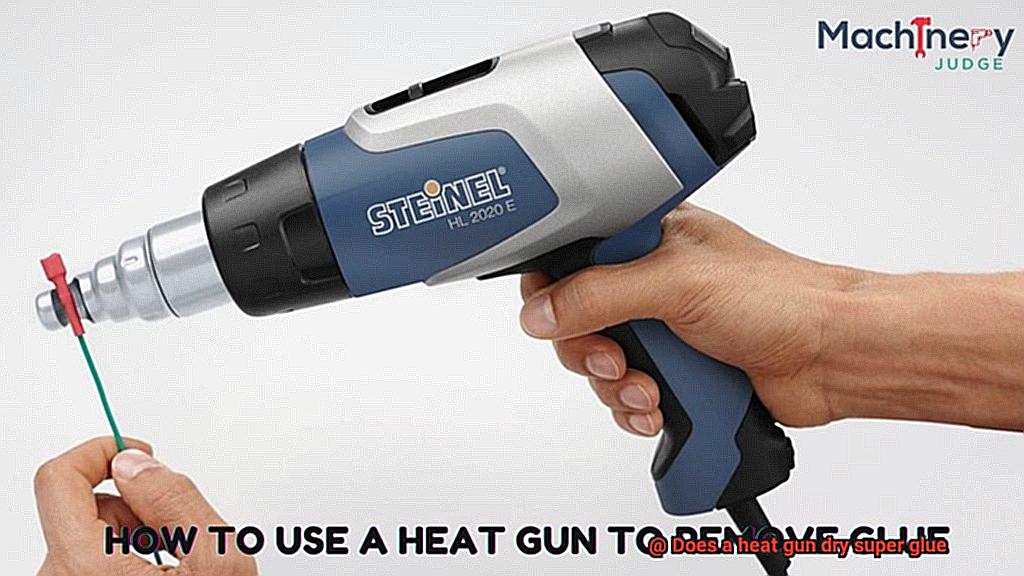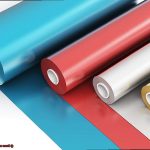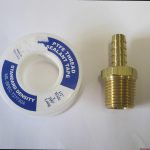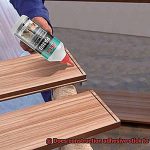Ever been stuck in a sticky situation where you need super glue to work its magic ASAP? We’ve all been there, my friend. Whether it’s fixing a shattered heirloom or attaching bling to your favorite accessory, super glue can be a total lifesaver.
But what if time is slipping through your fingers like sand? Enter the heat gun. This bad boy is famous for zapping drying times, but does it really have the power to fast-track the curing of super glue?
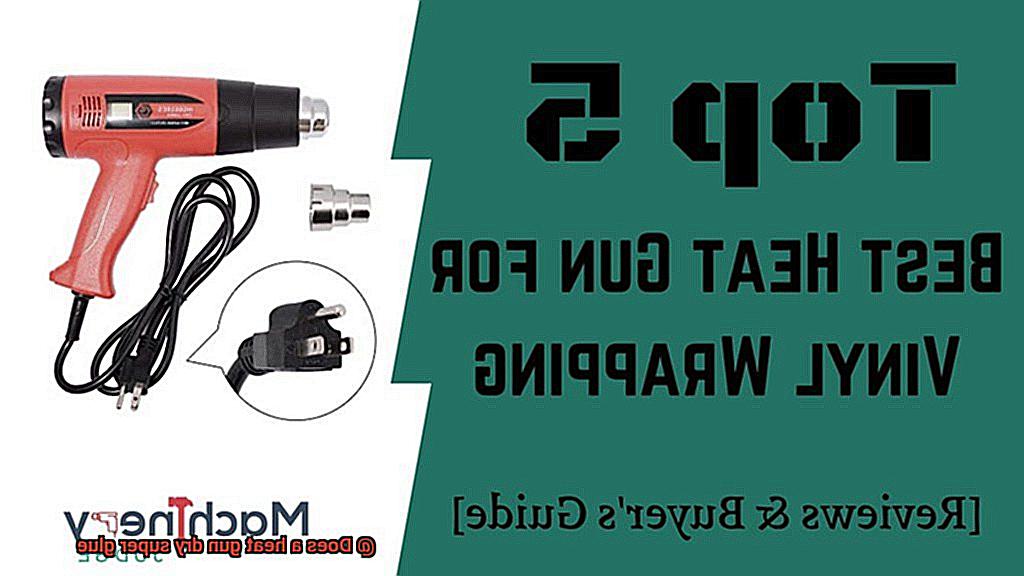
In this blog post, we’re gonna get down and dirty with the truth about whether a heat gun can help dry super glue faster and become your go-to DIY partner-in-crime.
Why You Should Care:
Contents
- 1 What is Super Glue?
- 2 How Does a Heat Gun Work?
- 3 Benefits of Using a Heat Gun to Dry Super Glue
- 4 Precautions When Using a Heat Gun to Dry Super Glue
- 5 Setting the Heat Gun for Optimal Results
- 6 Patience is Key: Drying Time
- 7 Working in a Ventilated Area
- 8 Testing the Heat Gun on an Inconspicuous Area
- 9 Conclusion
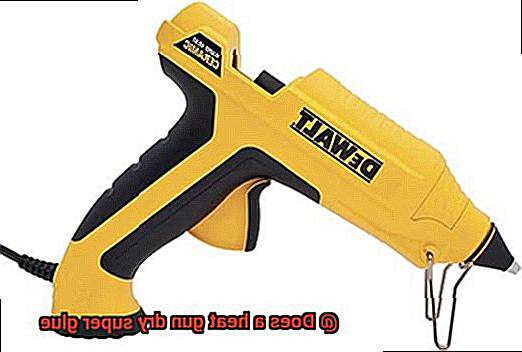
Listen up, folks. Anyone who’s ever used super glue knows that agonizing wait for it to set. We’re all desperate for quick fixes, especially when time is against us. That’s why the idea of using a heat gun to speed up the drying process of super glue has got our attention.
By digging into whether this technique actually works, we’ll save you precious minutes and prevent any potential disasters along the way. Plus, we’ll explore how practical it is to whip out that heat gun for all sorts of DIY projects, giving you newfound confidence and inspiration. So buckle up and let’s uncover whether a heat gun can truly make your super glue dry faster than lightning.
What is Super Glue?
Super Glue, also known as cyanoacrylate adhesive, is a phenomenal adhesive that has become an essential tool in countless households and industries. Its rapid-drying and robust bonding properties make it a game-changer in the world of adhesives.
One of the most remarkable features of Super Glue is its ability to bond almost instantly. Within mere seconds of application, this adhesive forms an unyielding bond that can withstand significant force. This quick-drying property makes it incredibly convenient for applications where immediate bonding is crucial.
Super Glue is renowned for its exceptional adhesive strength. It can bond a wide range of materials, including plastic, metal, rubber, ceramic, glass, wood, and even some fabrics. Its versatility makes it a go-to choice for professionals and DIY enthusiasts alike.
Another standout characteristic of Super Glue is its resistance to extreme temperatures. Whether faced with scorching heat or freezing cold, this adhesive maintains its bonding capabilities without compromising on strength. It’s like having a reliable partner in both fiery and frosty conditions.
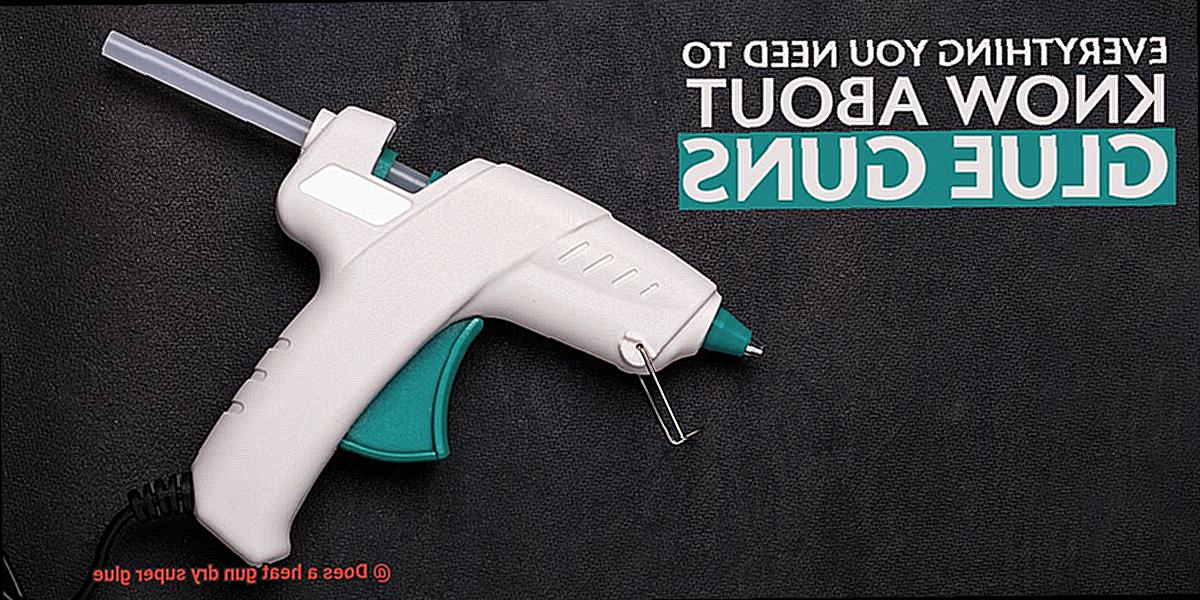
However, it’s important to note that Super Glue may not be suitable for all materials. Some plastics or surfaces with low surface energy may not form a strong bond with Super Glue. In such cases, specialized adhesives designed for those specific materials are recommended.
Super Glue is typically sold in small tubes or bottles with precision applicator tips, allowing for controlled and precise application. It’s vital to handle Super Glue with care as it can bond skin and other surfaces together if not used properly. Wearing gloves and working in a well-ventilated area are wise precautions when using Super Glue.
To expedite the drying process of Super Glue, some individuals opt to use a heat gun. While this method can be effective, caution must be exercised to ensure safety and prevent any potential damage. The heat gun should be set at a low or medium heat setting and kept at a safe distance from the glue to avoid direct contact. Moving the heat gun in a sweeping motion helps distribute the heat evenly, preventing overheating in one spot. Patience is key, as rushing the process can weaken the bond and affect the adhesive’s overall strength. Working in a well-ventilated area is also advisable to prevent inhalation of fumes.
How Does a Heat Gun Work?
A heat gun is a versatile tool used in DIY projects like paint removal, shrink-wrapping, and bending plastic pipes. But how does it actually work? Let’s take a closer look at the inner workings of this handy device.
At its core, a heat gun generates hot air through a heating element, fan, and nozzle. When you turn it on, the heating element starts to warm up. Made of nichrome wire, this element can withstand high temperatures without melting. As it heats up, it transfers thermal energy to the surrounding air.
But the fan is where the magic happens. It circulates and directs the heated air. Drawing in cool air from the surroundings, it pushes it over the heating element, increasing its temperature even more. The hot air is then propelled forward through the nozzle, creating a powerful stream of heat.
The nozzle is designed to focus and direct the airflow precisely where you need it. It’s like a precision instrument for delivering heat. Some heat guns even come with interchangeable nozzles, providing versatility for different projects.

Temperature control is another vital feature of a heat gun. With adjustable settings, you can choose the desired level of heat output. This is especially useful when working with materials that require specific temperature ranges.
Safety is a top priority with heat guns. They have proper insulation to protect your hands from burns and a sturdy handle for comfortable gripping. The controls are also easily accessible while holding the tool.
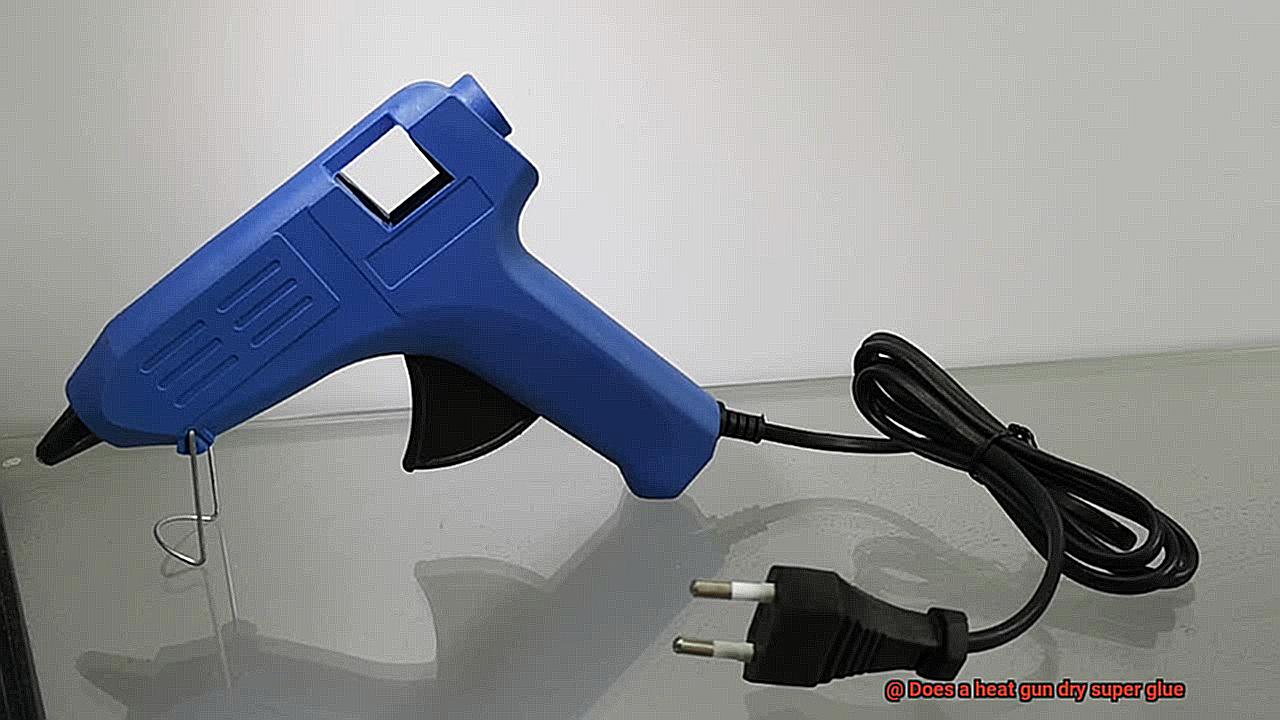
Benefits of Using a Heat Gun to Dry Super Glue
Unlock the Power of a Heat Gun: Why It’s Your Secret Weapon for Drying Super Glue in Seconds
Introduction:
Waiting for super glue to dry can be a major frustration, whether you’re working on a DIY project or need a quick fix. But fear not. We have the perfect solution: a heat gun. In this blog post, we’ll explore the incredible benefits of using a heat gun to dry super glue and how it can revolutionize your crafting and repair projects.
Speed up the drying process:
Say goodbye to endless waiting and hello to instant results. Super glue typically takes a few minutes to dry on its own, but with a heat gun, you can cut that time down to just a few seconds. By applying heat, the moisture in the glue evaporates faster, accelerating the chemical reaction that causes the glue to harden and bond to surfaces.
Create stronger bonds:
Not only does a heat gun speed up the drying process, but it also creates stronger bonds between surfaces. When super glue dries quickly, it forms tighter and more secure connections. This makes it ideal for projects that require durability and strength, such as woodworking or fixing household items. With a heat gun, you can trust that your bond will hold strong.
Precise control over drying:
Unlike other methods like air drying or using accelerants, a heat gun provides direct and concentrated heat to specific areas that need to be dried quickly. Its focused stream of hot air allows you to target the exact spot where the super glue needs to set without affecting the rest of your project. This level of precision is invaluable when working on intricate or delicate pieces.
Moisture can hinder the bonding process of super glue, leading to weaker adhesion or even failure. But fear not. A heat gun helps eliminate this issue by rapidly evaporating any moisture present. This ensures a stronger and more reliable bond, even in humid environments or when working with materials that naturally contain moisture. No more worries about the weather or the dampness of your materials.
Quick project completion:
Time is of the essence, especially when you’re in the midst of a project. With traditional drying methods, you may have to wait for several minutes or even hours for the super glue to fully dry and set. By using a heat gun, you can significantly reduce this waiting time and move forward with your project more quickly. It’s a game-changer when you’re on a tight schedule or working against a deadline.
Precautions When Using a Heat Gun to Dry Super Glue
Using a heat gun to dry super glue can be a convenient and efficient method, but it is important to take precautions to ensure safety. Here are some key precautions to keep in mind when using a heat gun for this purpose:
- Wear protective gear: Always wear gloves and safety goggles when using a heat gun. This will protect your hands from burns and your eyes from any potential flying debris.
- Work in a well-ventilated area: Super glue emits fumes when heated, which can be harmful if inhaled in large quantities. Make sure you are working in a well-ventilated area or use a fan to circulate the air and minimize exposure to these fumes.
- Maintain a safe distance: Keep the heat gun at least 6 inches away from the glued surface. Excessive heat can cause the super glue to bubble up or even catch fire. By maintaining a safe distance, you can prevent any accidents or damage.
- Move the heat gun constantly: Avoid focusing the heat on one spot for too long. Instead, keep the heat gun moving constantly. This will help distribute the heat evenly and prevent any potential damage to the surface or the super glue.
- Test on delicate materials: If you are working with delicate materials such as plastics or fabrics, be extra cautious. High temperatures can cause these materials to melt or warp. Before applying heat to the entire glued surface, test a small, inconspicuous area first to ensure that it can withstand the heat.
- Follow manufacturer instructions: Always read and follow the instructions provided by the manufacturer of both the super glue and the heat gun. Different brands may have specific guidelines or precautions that need to be followed for optimal results and safety.
- Never leave a heat gun unattended: It is crucial never to leave a heat gun unattended while it is turned on. Always switch it off and allow it to cool down before storing it away.
- In case of accidents or burns: If you experience any accidents or burns while using a heat gun, rinse the affected area with cold water immediately. If necessary, seek medical attention.
Setting the Heat Gun for Optimal Results
When it comes to drying super glue, using a heat gun can be a game-changer. But to achieve optimal results and avoid any mishaps, it’s crucial to set the heat gun properly. In this blog post, we will explore the steps you need to take to ensure that your super glue is dried effectively.
Step 1: Choose the Right Temperature
The first step in setting the heat gun for optimal results is to choose the right temperature. Different models and brands have varying temperature ranges, so finding the sweet spot is essential. Set the temperature to a moderate level, usually between 250-350 degrees Fahrenheit (120-175 degrees Celsius). This range provides enough heat to speed up the drying process without risking damage to the glue or the material it is applied to.
Step 2: Adjust the Airflow
Another important factor to consider is airflow. Some heat guns come with adjustable airflow settings, allowing you to control how fast and forcefully the heated air is blown out. When drying super glue, it’s best to use a lower airflow setting. High airflow can disrupt the glue, causing it to spread unevenly or detach from the surface. By setting the airflow to a lower level, you can ensure that the heated air is dispersed evenly over the glued area, allowing for a more controlled and thorough drying process.
Step 3: Maintain a Safe Distance
To prevent excessive heating and potential damage, it’s crucial to maintain a safe distance between the heat gun nozzle and the glued surface. Keep it around 6-8 inches (15-20 centimeters) away. This will help ensure even heating and prevent any mishaps.
Step 4: Follow Manufacturer’s Instructions
Different types of super glue may have varying drying times and temperature tolerances. To ensure optimal results, always refer to the manufacturer’s instructions and recommendations for the specific super glue you are using. The manufacturer’s guidelines will provide valuable insights into the best temperature and airflow settings for drying their particular glue.
Patience is Key: Drying Time
Waiting for glue to dry can test anyone’s patience, especially when you’re eager to finish a project. Fortunately, there’s a way to speed up the process: a heat gun. In this article, we’ll explore why patience is crucial when drying super glue and how using a heat gun can efficiently hasten the process. So, if you’re tired of waiting for glue to dry, read on.
Understanding Super Glue:
Super glue, also known as cyanoacrylate adhesive, is a versatile adhesive famous for its rapid drying properties. It’s a go-to choice for DIY enthusiasts and professionals alike because of its ability to bond various materials with ease.
Factors Affecting Drying Time:
Several factors can influence the drying time of super glue. The amount of glue applied, the types of materials being bonded, and the environmental conditions all play a role. Generally, under normal circumstances, super glue dries within seconds to minutes.
The Importance of Patience:
Patience is paramount when drying super glue. Rushing the process can lead to incomplete drying or weak bonding, compromising the overall strength and effectiveness of your project. It’s vital to allow the glue to dry naturally and give it sufficient time to form a durable bond.
The Power of Heat Guns:
For those lacking patience, fear not. A heat gun can be your secret weapon in accelerating the drying time of super glue. When used correctly, it significantly reduces the waiting time without compromising the integrity of the bond.
Proper Usage of Heat Guns:
To achieve optimal results and avoid any mishaps, follow these guidelines when using a heat gun:
- Set the heat gun to a low to medium heat setting.
- Maintain a safe distance of approximately 6 to 8 inches between the gun and the glued area.
- Keep the heat gun in continuous motion, sweeping it back and forth to evenly distribute the heat.
- Monitor the glued area closely and remove the heat gun as soon as the glue appears completely dry.
Cautionary Notes:
While a heat gun can expedite the drying time, exercise caution. Excessive heat can damage certain materials or create safety hazards. It’s advisable to test the heat gun on a small inconspicuous area before applying it to larger areas or delicate surfaces.
Working in a Ventilated Area
When it comes to working with a heat gun to dry super glue, ventilation is not just a luxury – it’s a necessity. Ventilation plays a vital role in ensuring the safety, efficiency, and quality of your projects. Let’s delve into the benefits of working in a well-ventilated area:
- Fume removal: Super glue releases fumes when exposed to heat, which can be irritating and potentially harmful if inhaled for extended periods. Ventilation helps disperse these fumes and prevents them from lingering in the air around you. By allowing fresh air to circulate, you safeguard your health and create a safer working environment.
- Health precautions: Different types of super glue may emit varying amounts of fumes when exposed to heat. Following the manufacturer’s instructions and working in a well-ventilated area ensures you take the necessary precautions to protect yourself from potential health risks.
- Quick and even drying: Adequate airflow provided by ventilation not only safeguards your well-being but also enhances the efficiency of the drying process. It helps dissipate heat, allowing the super glue to dry quickly and evenly. As a result, you save time on your projects while achieving a stronger bond.
To maximize ventilation, consider opening windows and doors or using fans to improve airflow. These simple steps can make a significant difference in your working environment, promoting both safety and productivity.
Testing the Heat Gun on an Inconspicuous Area
You’re ready to dry that super glue using a heat gun, but before you dive in, it’s essential to take a moment and test it on an inconspicuous area. This seemingly extra step is actually crucial for ensuring a safe and successful drying process. Let’s explore why testing the heat gun on an inconspicuous area is so important.
Determining the Right Temperature and Duration:
By testing the heat gun on an inconspicuous area, you can find the perfect balance between temperature and duration. Starting with a low temperature setting ensures that you avoid overheating and potential damage to your glued object. Gradually increasing the temperature, if necessary, allows you to closely monitor the glue’s reaction and achieve optimal drying results.
Avoiding Unwanted Damage:
Imagine applying heat directly to your super glue without testing it first, only to discover that it bubbles or melts, leaving you with a messy and damaged project. Testing on an inconspicuous area ensures that any adverse effects are minimal and won’t compromise the overall appearance of your item. It’s a small precaution that saves you from potential frustration and disappointment.
Considering Different Types of Super Glue:
Not all super glues are created equal. Some may require higher temperatures or longer exposure to effectively dry. By testing the heat gun on an inconspicuous area, you can determine the specific needs of your brand of super glue and adjust accordingly. This knowledge allows you to tailor your drying process for maximum efficiency and effectiveness.
Selecting an Inconspicuous Area:
Choose a small and hidden area that won’t be noticeable if any adverse effects occur. The corner or underside of the glued object is typically a safe bet. Remember, this test is about assessing the glue’s reaction, not the overall appearance of the item.
Setting the Heat Gun:
Begin with a low temperature setting to minimize the risk of damage. Position the heat gun 6-8 inches away from the surface. This distance ensures even heat distribution and prevents concentrated heat from causing unintended consequences.
Applying Heat:
Move the heat gun in a back-and-forth motion, evenly applying heat to the glued area. Observe any changes in the glue’s consistency or appearance. If you notice bubbling or melting, immediately reduce the heat to prevent further damage.
Assessing the Results:
After a short duration, gently touch the glued area to check if it feels dry and firmly bonded. If it does, congratulations. You can now confidently use the heat gun to dry the rest of the glue. However, if it feels soft or sticky, more heat or time is needed for proper drying.
Also Read: How to Make Glue Dry Faster
Conclusion
The conclusion is clear: yes, a heat gun can indeed dry super glue.
This powerful tool emits hot air that accelerates the drying process of the adhesive, allowing it to cure faster and create a strong bond. With its intense heat, the heat gun acts as a catalyst, evaporating any moisture in the glue and promoting rapid drying.
Whether you’re working on a DIY project or repairing broken items, using a heat gun alongside super glue can save you time and ensure a secure and durable bond.

